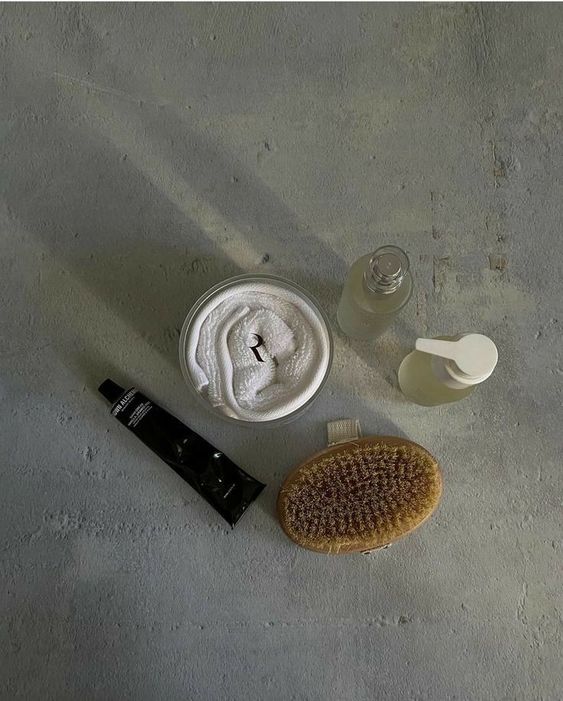
Trends will always come and go, and that also applies to the skincare industry. It is so difficult for consumers and beauty professionals alike to keep up with the latest cosmetic “craze”, that they often feel overwhelmed. The most frustrating part of certain trends is that they are kissed goodbye after practically everyone has followed them, only to realize that they were just a novelty that didn't live up to the expectations. At Rosafa, we believe that true trends are not transient and actually help to shape both current and future cosmetic developments. Keeping this in mind, we have selected the seven 2022 skincare trends that have come to stay and will greatly influence our skincare routines.
1. Inside-out beauty:
As romantic as it might sound, we are not referring here to a person who cultivates kindness, empathy, tolerance, etc. Those qualities certainly give meaning to our lives and are often perceived as beauty in many cultures. What we really mean by inside-out beauty is incorporating lifestyle habits that will result in healthy skin, namely: eating a wholesome diet, balancing the microbiome, taking skin-supporting supplements, securing a good night's sleep, managing stress and addressing any conditions that could have a negative impact on the integrity of the skin. It really doesn't matter how much you splurge on luxury skincare and innovative aesthetic treatments, without a good “foundation” it will be practically impossible for you to attain a radiant complexion and become your best version. “Think outwards, act inwards”.
2. At-home treatments:
It is said that you either adapt to a situation, or you are doomed to failure. As spas and dermatological/plastic surgery clinics were unable to provide onsite services during the lockdown, the industry had to come up with a solution that would allow them to thrive. Well, the solution was already available but the pandemic saw a skyrocketing increase in the sales of all at-home treatments. We are talking about advanced facial kits, body systems, jade rollers, gua sha, and even FDA approved beauty devices. Even though you can now book a session at your favorite spa, this trend has come to stay. Let's face it, not everyone has the money to afford expensive treatments. They are not as potent an esthetician-lead treatment, but you will be able to use them more frequently and that is a great way of supporting/maintaining the results. A word of caution: leave microneedling treatments to qualified professionals only. The same can be said about chemical peels, IPL and laser treatments for people with sensitive skin, hyperpigmentations or darker skin tones.
3. Professional radiofrequency treatments:
Unlike the light-based laser and IPL technologies, radiofrequency relies on non-ablative (destruction or removal of tissue) and non-invasive radio waves to induce a cosmetic benefit. These electric currents work by uniformly heating the dermal layers, which causes the collagen bundles to contract, tighten, remodel, renew, and reorientate. Radiofrequency waves are highly stable and are not associated with the dreaded post-inflammatory hyperpigmentation. This makes RF suitable for every single complexion, including those with darker skin tones. Even though at-home radiofrequency devices are much more affordable, the level of stimulation can't be compared with those provided by their professional counterparts. The latter work at a deeper level and ensure that a temperature of at least 115°F (46°C) is reached and maintained to ensure that the collagen fibers are stimulated via the release of heat-shock proteins (which repair other proteins and degrade them when severely damaged)[1][2]. This translates into much more significant results with less initial and top-up sessions, especially when professional radiofrequency with microneedling treatments are performed.
4. Ceramides:
If there is one ingredient that deserves more “press” and attention, that is ceramides. These are waxy-like molecules that contain both an amino acid and a fatty acid[6]. They can be found in the intercellular “lipid glue” of the outermost layer of the skin: the stratum corneum[6]. Ceramides are so important that they account for 50% of the skin barrier lipids[6]. Alongside the other components of the stratum corneum, ceramides form a water-retaining film that prevents transepidermal water loss[6]. By doing so, they keep the skin soft, moisturized, protected-against microorganisms, toxins, environmental factors- and even improve the appearance of fine lines and wrinkles[6]. Last, but not least, ceramides also regulate the proliferation of keratinocytes, thus keeping the skin young-looking[6].
Whileceramides in skin care
might seem more beneficial for dry complexions and conditions like eczema and psoriasis, they also have an important place in the management of acneic skin. It is a well-known fact that levels of ceramides are reduced in acne-prone complexions[7], and these are further compromised by the drying and sensitizing ingredients that comprise their treatment protocols.5. Niacinamide in skincare:
This vitamin B3-derived ingredient is not just another fad; it has come to stay thanks to the multiple studies that back up its numerous benefits. When present at concentrations of up to 5%, there are no known niacinamide side effects thus will not cause any flushing or redness[4]. Quite the opposite, as it will help to tackle inflammatory processes such as those observed in acne-prone, rosacea, and sensitive skin[4]. Speaking about acne, niacinamide does a good job at regulating sebum secretion as well as improving skin texture and pore size[4][5]. Overtime, regular application of niacinamide will result in fewer comedones, papules and pustules. Niacinamide promotes the synthesis of lipids and proteins that make up the epidermal barrier, namely, ceramides, keratin, filaggrin and involucrin[4]. A strong barrier function equals less irritation, proper moisture levels, and greater protection against environmental aggressors[4]. To top it all, niacinamide reduces the depth of fine lines & wrinkles and brightens the complexion[4]. A more even skin tone is achieved by inhibiting the transfer or structures called melanosomes, which transport melanin to the upper layers of the epidermis[4]. In summary, niacinamide is one of those wonder ingredients that can cater to all skin types and conditions.
6. Cleanical skincare:
Sounds familiar, right? Cleanical skin care is nothing more than a cross-breed between clean beauty and cosmetic formulas with clinically proven benefits (the so-called medical-grade). With the rise in popularity of antibacterial products and the growing demand for skincare that actually works, the clean beauty movement had to reinvent itself and go beyond both its sustainability and toxic-free focus. This is how cleanical skincare came to be. Their formulas are still chock-full of plant-based ingredients and avoid any suspicious chemicals, whether they were naturally or synthetically derived. The main difference is that all cleanical products are high performance and backed up by science. Cleanical skin care also harnesses the benefits of biotechnology, with many active ingredients now being lab-grown to reduce costs without compromising their efficacy. Hyaluronic acid produced via microbial fermentation is a good example.
7. Going makeup-free:
The body acceptance movement has allowed women to embrace their flaws, and even be proud of showing them. This includes ditching zillions of cakey makeup layers to conceal acne breakouts, uneven skin tone, dark under-eye circles and other “imperfections”. We are not saying that makeup should be entirely banned from your life, but it is not necessary to become dependent on color cosmetics to “face the world”.
There are multiplebenefits of going makeup free
, such as achieving glowy skin (who doesn't want that?), getting ready in 20 minutes, having more time to do other activities, and even reducing your environmental impact. Did you know that bacteria present in sewage treatment plants break down cosmetic waste and produce new contaminants?[3] The more cosmetics formulas you use, the higher your carbon footprint will be. Going barefaced is not an easy process as most of us, literally, do not feel comfortable in our own skin. If you are able to go cold turkey, kudos to you. For those who find this a real struggle, here are some easy-to-followtips on going makeup free
:- Practice minimalism: try to use as little makeup as possible and switch from super heavy-weight makeup to mineral formulas or tinted moisturizers.
- Brush up your skin care routine: your complexion might not be perfect, but there are ways to improve it such as by eliminating clogging/irritating ingredients and incorporating active ingredients with proven benefits. No matter what, always cleanse, treat with serum, moisturize and apply sunscreen. A few drops of facial oil can help you achieve the glass skin look. Try to exfoliate 2-3 times per week with a formula rich in fruit acids and/or enzymes. Masks applied twice weekly can take your skin to a whole new level as they are brightening, nourishing, soothing, purifying and regenerating. If necessary, get help from a qualified dermatologist or esthetician to target your problem areas.
- Work hard at improving other aspects of your life that affect your skin health: we are talking about eating a balanced diet, addressing hormonal imbalances, getting enough sleep, drinking pure water, practicing meditation and relaxation techniques, nurturing positive relationships, etc.
- Think about the other benefits that you will get: like saving time and money, being able to support your skin healing process by letting your complexion breathe.
- Just go for it!: you might never feel 100% ready, but find the perfect occasion to show your clean face like when working out at the gym, paying a visit to your mom or whenever you have an appointment with your doctor. These “tests” will prepare you to go makeup-free 90% of the time and only wear color cosmetics on special events. We can guarantee you that going makeup free will become a habit and you won't miss your long makeup application sessions.
What are your thoughts? Do you really resonate with these trends and think they have come to stay? Have any of them become a part of your skincare habits? Let us know, we would love to hear from you. Make sure to visit our Instagram, Facebook, Linkedin and Pinterest pages for more skincare tips and tricks!
References:
[1] https://www.ncbi.nlm.nih.gov/pmc/articles/PMC5404777/
[2] https://link.springer.com/chapter/10.1007/978-3-030-03952-3_5
[4] https://www.dermatologytimes.com/view/anti-aging-effects-niacinamide
[5] https://www.tandfonline.com/doi/abs/10.1080/14764170600717704
[6] https://lipidworld.biomedcentral.com/articles/10.1186/s12944-016-0178-7




